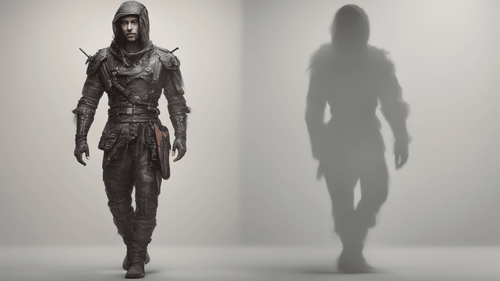
Art has always been a profound expression of human imagination and emotions. From cave paintings to Renaissance masterpieces, art reflects our cultural evolution and individuality. In the age of technology, the marriage of artificial intelligence and artistic creation has given birth to a remarkable innovation: the AI art maker. This transformative tool is revolutionizing the world of art by merging human creativity with computational power, yielding stunning results that captivate both artists and audiences alike.
The Evolution of Art and Technology
Art and technology have always shared a complex yet symbiotic relationship. Throughout history, artists have embraced new tools and mediums to expand their creative horizons. The emergence of AI in the realm of art marks a new chapter in this relationship. By harnessing the capabilities of machine learning and deep neural networks, AI art makers enable artists to explore uncharted territories of expression.
AI in the Creative Realm: A Paradigm Shift
In the traditional artistic process, creators rely on their intuition, skill, and experience to bring their visions to life. The advent of AI art makers challenges this notion, offering a novel way to augment human creativity. These tools use algorithms to analyze existing artworks, understand artistic styles, and generate entirely new pieces that blend human inspiration and computational ingenuity.
How AI Art Makers Work
At the heart of AI art makers lies sophisticated algorithms that mimic the cognitive processes of the human brain. These algorithms process vast amounts of artistic data, learning to recognize patterns, styles, and techniques. This deep understanding of art history and aesthetics empowers AI to produce original compositions that evoke genuine emotional responses.
Data-Driven Artistry: The Core of AI Art Makers
AI art makers thrive on data. They analyze an extensive array of artworks, studying brush strokes, color palettes, and composition techniques. Through this analysis, they distill artistic styles into quantifiable features that algorithms can comprehend. By recognizing the subtleties that make each artist's work unique, AI generates pieces that carry the essence of human-inspired creativity.
Training the Machine: Neural Networks and Art Generation
Neural networks, a fundamental component of AI art makers, operate similarly to the interconnected neurons in the human brain. These networks consist of layers that process information hierarchically, with each layer learning different aspects of artistic expression. Through a process called "training," the neural network refines its understanding of art, allowing it to generate original works that align with specific styles or themes.
The Fusion of Human and AI Creativity
AI art makers excel not in replacing human artists, but in collaborating with them. They act as virtual partners, offering novel ideas and inspiration that artists can build upon. This fusion of human and AI creativity sparks a new era of artistic exploration, where the boundaries of what is possible expand exponentially.
Cultivating Artistic Inspiration: The AI Catalyst
AI art makers serve as catalysts for inspiration. Artists can input their ideas, preferences, and themes into the AI's algorithmic framework. The AI then processes this input, generating suggestions and variations that artists might not have considered. This iterative process fosters a dynamic exchange between human imagination and computational analysis.
Exploring New Horizons: AI-Driven Art Styles
One of the most captivating aspects of AI art makers is their ability to emulate various artistic styles with remarkable accuracy. From Impressionism to Cubism, AI-generated pieces encapsulate the essence of iconic movements. This versatility not only pays homage to art history but also invites artists to experiment with different styles, expanding their creative repertoire.
AI Art Maker FAQs
Can AI Art Makers Replace Human Creativity?
While AI art makers are powerful tools, they don't possess human emotions, experiences, or originality. They complement human creativity by offering fresh perspectives and ideas.
Is Using an AI Art Maker Cheating?
Absolutely not. Just as artists use different mediums and techniques, AI art makers are another creative tool in an artist's toolkit. They're a means of exploration, not a shortcut.
Do AI-Generated Artworks Have Emotional Depth?
AI-generated artworks can evoke emotions, but they lack personal experiences that human artists infuse into their creations. However, the emotional impact can still be profound.
Are AI Art Makers Accessible to Everyone?
Yes, many AI art maker platforms are accessible online. Some require artistic input, while others can autonomously generate art. It's an exciting democratization of creativity.
Can AI Art Help Preserve Cultural Heritage?
Absolutely. AI can analyze and recreate deteriorating artworks, contributing to the preservation of cultural heritage for future generations.
What's the Future of AI in Art?
The future is promising. AI art makers will continue to evolve, potentially giving rise to entirely new art forms that challenge our perceptions and push boundaries.
In Conclusion
The emergence of AI art makers marks a pivotal moment in the world of creativity. By embracing technology as a collaborative partner, artists unlock new dimensions of inspiration and innovation. While AI art makers will never replace the intrinsic value of human artistry, they amplify the creative process, making it more diverse, inclusive, and limitless than ever before. As this dynamic relationship between AI and art unfolds, we're witnessing an artistic renaissance that merges the brilliance of human expression with the power of artificial intelligence.